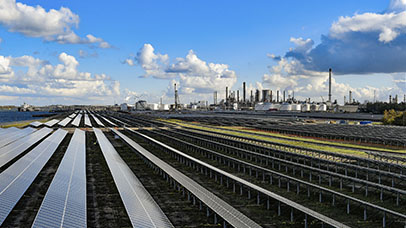Upstream
Key figures in 2019
Cash flow from operations
billion
production
kboe/day
cash capital expenditure
billion
employees
new acreage
million net undeveloped acres addition
fids taken
final investment decisions taken
carbon captured and stored through Quest project
million tonnes
years in the conventional oil and gas business
GHG Emissions
million tonnes lower direct GHG emissions vs. 2018 (scope 1)
Our Upstream business manages the exploration for and extraction of crude oil, natural gas and natural gas liquids. It also markets and transports oil and gas and operates the infrastructure necessary to deliver them to market.
We need to discover resources and negotiate their extraction with governments and other stakeholders before operations can begin. We do not always find the oil and gas that we are looking for and may have to write off those early investment costs.
When we find resources, we expect to invest significant sums in the early development stages of projects. It may be several years before we realise any revenues as projects move through the development phase and into production. These projects are often long term in nature, spanning decades.
Our payments to governments
in $ billion
Includes payments made to governments in countries where we have upstream operations. Excludes payments related to other businesses.
We are exposed to market risks, among others, over the lifetime of a project and this impacts the taxes we pay. Low oil or natural gas prices may sometimes mean that upstream activities incur losses even during a production phase.
In 2019, the global economic environment weakened and reduced the expected growth in demand for oil.
For most of 2019, OPEC members and cooperating non-OPEC resource holders, most notably Russia, continued to disclose their intent to cap their overall production at 2018 levels. This cap was offset by increased production from non-OPEC countries. OPEC’s production, however, reduced in 2019, in part due to sanctions imposed on Iran and Venezuela. In December 2019, OPEC members decided to further cap production by 0.5 million b/d, effective in 2020.
COVID-19 will also impact the global economy significantly with the World Bank saying it expects the pandemic to have pushed most countries into recession in 2020. This has further reduced the demand for oil.
Upstream operations often bring significant employment. The infrastructure investments we make are included in the property, plant and equipment reported in our Annual Report and Accounts.
 Message from the Chief Financial Officer
Message from the Chief Financial Officer
 Shell’s approach to taxes
Shell’s approach to taxes
 Special topics
Special topics
 Our tax data
Our tax data
